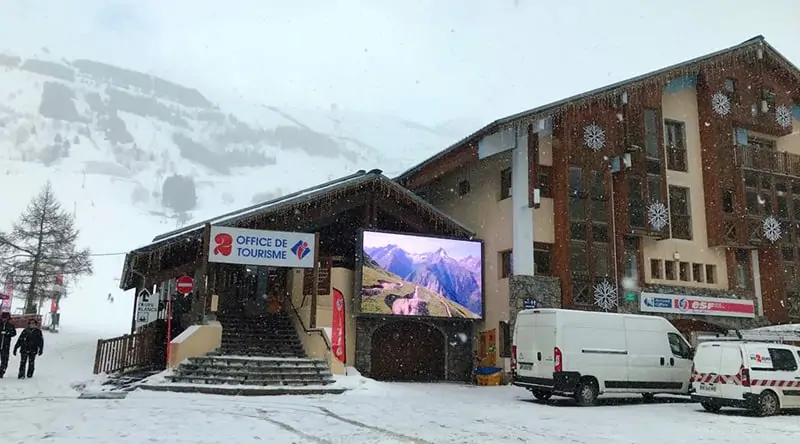This is the time of the year when many Customers ask me about the operating temperature of the LED video walls. The winter has come and apparently, this is going to be a cold one. So the question I hear a lot these days is “How cold is too cold?”
In the months between December and also February, we can get to incredibly reduced temperature levels, usually as reduced as -20 ° C/ -25 ° C in city locations of main Europe (can reach -50 ° C in north nations such as Sweden as well as Finland).

So exactly how does a led display respond when the temperature levels are so extreme? The basic guideline for led displays is this: the chillier it is, the far better it runs(Within a controlled temperature range).
Some amusingly claim that a led display runs ideal with a slim icy layer on it. The reason that’s a joke is because humidity and electronic printed circuits don’t mix very well, so ice is better than water.
Just how reduced can the temperature level go before ending up being a concern? Led chip vendors, normally show the most affordable operating temperature level of the LEDs at -30 ° C. This is a respectable minimum temperature level as well as it suffices for 90% of European cities and also nations.
But how can you protect your led screen when the temperature is even lower? Or when the thermometer is at -30°C for several consecutive days?
When the LED screens are functioning, their parts (led ceramic tiles, power distributor, and also control panel) warms up. This warmth is after that included within the steel cupboard of each solitary component. This procedure develops a warmer as well as drier micro-climate inside each cupboard, which is suitable for the led display.
Your objective needs to be to protect this micro-climate. This suggests maintaining the led display functioning 24 hrs a day, also in the evening. Transforming the led display off in the evening (from midnight to 6 in the early morning, for instance) is one of the worst points you can do in very chilly weather conditions problems.
The inner temperature level goes down substantially in a brief time when you transform the led display off in the evening. This might not harm the parts straight, however, it may produce troubles when you intend to switch on the led display once more. Some components in particular are most sensitive to these temperature changes.
If you can not have the LED display functioning 24 hours a day (e.g. for some city regulations), after that the second-rate point you can do it to maintain the led display in stand-by (or black) in the evening. This implies that the led display is really “active” yet it is just not showing any kind of picture, precisely like television when you closed it down with the remote.
From the outdoors, you can not inform the distinction between a display that is turned-off and also one that remains on stand-by, yet this makes a huge distinction inside. Its parts are active as well as still creating some heat when the led display is on stand-by. It is a lot less than the warmth created when the led display is functioning, however, it is still better than no heat whatsoever.
Rather, if the led display does not switch on any longer, there is still an option. Before you activate the led display once more, attempt to warm up the cabinets with some electrical heaters. Let it warm up for thirty minutes to an hour (depending on weather conditions). Then try to turn it on again.
So to sum up below’s what you can do to protect your led display at very reduced temperature levels
1. Ideally, maintain your led display functioning 24 hrs a day.
2. If that’s not feasible, at the very least place it in a stand-by setting in the evening.
3. If you are forced to turn it off and you have a problem turning it back on, then try to warm the led screen up
